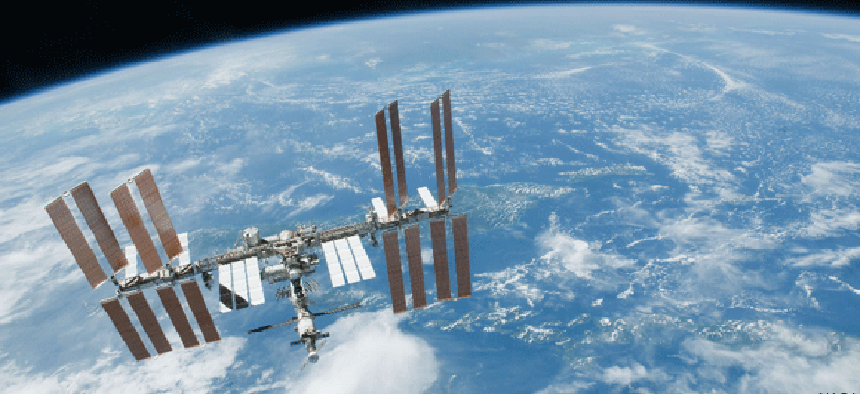NASA laser comm will rocket data to and from space

NASA's Optical Payload for Lasercomm Science (OPALS) technology could increase data transfers from space by a factor of 100.
NASA is testing new technology to help bring its data transfer rates to and from space out of the dark ages.
Since 1958, NASA has relied exclusively on radio frequency (RF)-based communications via the Deep Space Network for exchanging data between a mission and a spacecraft. The need for more and faster data (for example, high-definition video streams), however, is outpacing RF’s capabilities. It can take up to 15 minutes to send commands as far as Mars, -- and just as long to get a response back. Laser optical communication technology offers the promise of much higher data rates than what is achievable with RF transmissions.
NASA’s Optical Payload for Lasercomm Science (OPALS) technology could increase RF transmission speed by a factor of 10 to 100, the agency reported.
OPALS will be mounted on the outside of the International Space Station and will communicate with a JPL facilities at a ground station in Wrightwood, Calif. As the ISS travels across the sky, NASA will send a laser beacon from a ground telescope to the ISS payload. While maintaining lock on the uplink beacon, NASA explained, the OPALS flight system will downlink a modulated laser beam with a formatted video.
"It's like aiming a laser pointer continuously for two minutes at a dot the diameter of a human hair from 30 feet away while you're walking," explained OPALS systems engineer Bogdan Oaida of JPL.
It will be launched in December to the station via a SpaceXDragon commercial resupply capsule on the company’s Falcon 9 rocket. The mission is expected to run 90 days after installation on the station.
"OPALS represents a tangible stepping stone for laser communications, and the International Space Station is a great platform for an experiment like this," said Michael Kokorowski, OPALS project manager at JPL. "Future operational laser communication systems will have the ability to transmit more data from spacecraft down to the ground than they currently do, mitigating a significant bottleneck for scientific investigations and commercial ventures."
OPALS is not NASA’s first foray into laser optical communications. Earlier this year NASA announced it had beamed a picture of the Mona Lisa to a satellite circling the moon, the first time for one-way laser communication at planetary distances, GCN reported in January.





